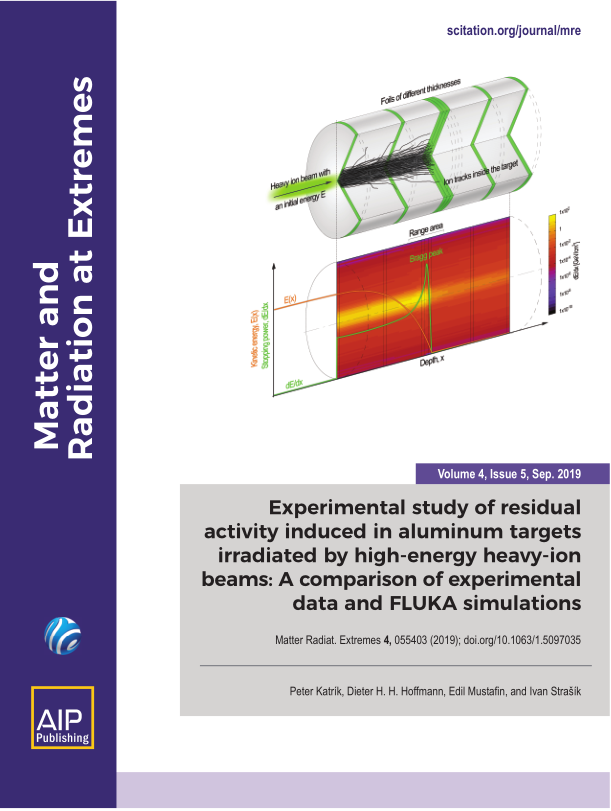Matter and Radiation at Extremes, 2019, 4 (5): 054401, Published Online: Nov. 8, 2019
A semi-classical model for the charge exchange and energy loss of slow highly charged ions in ultrathin materials
Abstract
We present a simple and reliable method, based on the over-barrier model and Lindhard’s formula, to calculate the energy loss, charge transfer, and normalized intensity of highly charged ions penetrating through 2D ultrathin materials, including graphene and carbon nanomembranes. According to our results, the interaction between the ions and the 2D material can be simplified as an equivalent two-body collision, and we find that full consideration of the charge exchange effect is key to understanding the mechanism of ion energy deposition in an ultrathin target. Not only can this semiclassical model be used to evaluate the ion irradiation effect to a very good level of accuracy, but it also provides important guidance for tailoring the properties of 2D materials using ion beams.
Xun Guo, Yanjun Fu, Xitong Zhang, Xinwei Wang, Yan Chen, Jianming Xue. A semi-classical model for the charge exchange and energy loss of slow highly charged ions in ultrathin materials[J]. Matter and Radiation at Extremes, 2019, 4(5): 054401.




